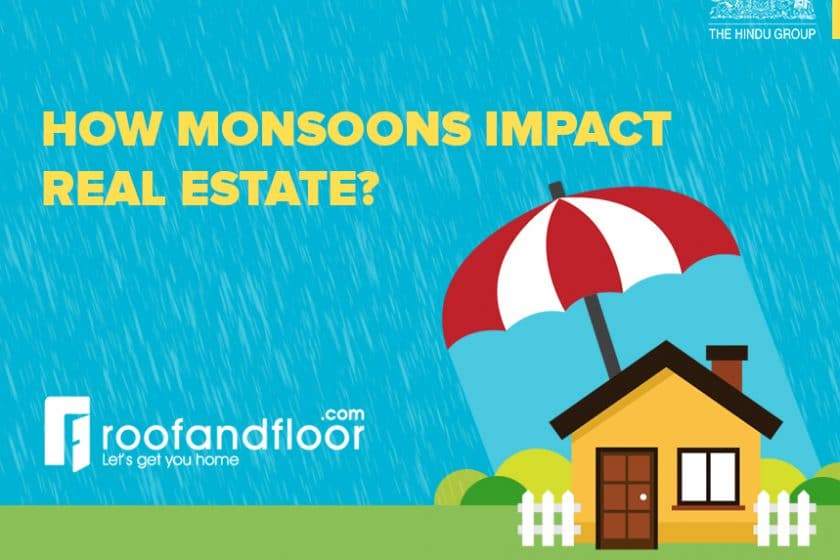
National Director
Head of Operations – Strategic Consulting
JLL, India
Monsoon plays an important role in forecasting the performance of Indian economy, as the larger part of its GDP constitutes of agriculture sector. India’s agriculture sector depends majorly on monsoon rains – if the monsoon is either dry or severe, the economy will suffer huge imbalance at both macro and micro level, hitting high on the GDP growth. Past experiences in India have concluded that on an average, the monsoon impacts GDP growth by 2.10%. There are many industries that are directly or indirectly dependent on agriculture for raw materials. These industries will choke if there is a disturbance to agriculture. This will lead to inflation as well as upset investor appetite.
The following are the direct and indirect impact of monsoon on Real Estate:
High interest rates affects buyers
RBI repo rates are a by-product of inflation. Higher repo rates means higher interest rates which will be a burden on developers who are either completely or about 50%, dependent on external funding. The construction activities, due to disturbance in funding, will skip project schedule thereby worsening the real estate performance. RBI rates will not only affect funding for developers but will also increase interest rates on home loans. This will affect buyers as today’s end user market depends greatly on home loans. The additional cost of interest will be unavoidably loaded on the buyers; reducing demand and sales of projects, thereby affecting the real estate ecosystem negatively.
Low cost labour and materials
A poor monsoon impacts positively on labour availability, albeit unskilled labour, for real estate as the agricultural labour force migrates to urban centres and joins construction work for lower pay. Combined with low cost of raw materials like cement and steel, due to low demand, self-financing developers will earn profits. Self-financing projects will benefit and will cater to the small demand at a lower price than the market price.
Funds crunch means few project launches
Owing to the real estate slowdown, lack of potential investors and the crunch in financing options for buyers and developers will force developers to sell their existing inventory first. In such a scenario, the market will witness very few new launches. On the other hand, developers will slow down construction progress until required sales or bookings are done ensuring adequate funding.
Too much/too less water
Monsoons reflect water availability which is a key factor for construction progress. During bad monsoons, availability of water is a major issue and construction progress will be badly hit. Water is needed for construction and lack of it results in construction delays for developers particularly in under-construction projects. In case of a rainfall deficient situation, the supply of water for construction gets curtailed by the local municipal bodies forcing developers to resort to sourcing water from tankers. On the other hand, excess rain also hinders construction progress.
Developers with their own funding have an edge and acquisitions of land along with distress sale of on-going projects takes place at a completive price. These developers might come out with good discounts for home buyers to boost sales.
Monsoon Forecast 2016
There is an above average monsoon predicted for 2016. Positive sentiments are expected to set in and the sector is forecast to record good sales. The regulatory system is being strengthened in parallel to support the good monsoon. Adding to it, amendment in the Real Estate Act which led to the formation of RERA and foreign investment coming into the country are further positives. These steps are expected to ensure transparency bringing back consumer trust which will boost investments for the sector which has suffered in the past due to delay in projects and lack of a regulatory authority.

